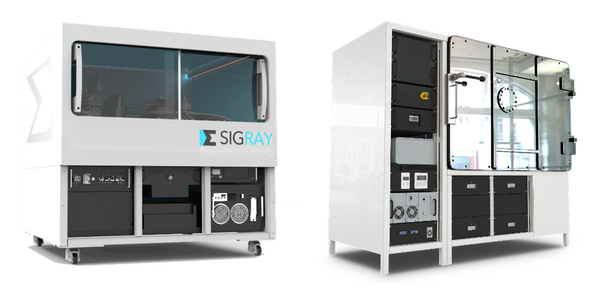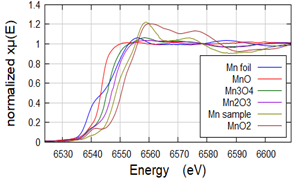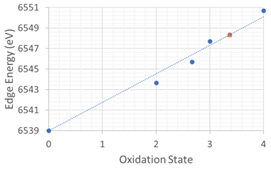Accurate Estimation of Oxidation States with Lab-XAS Sigray’s QuantumLeap Systems

Sigray’s QuantumLeap systems bring synchrotron performance directly to the laboratory. Two configurations are possible, one for analysis at lower energies (V210, range: 1.7 keV – 10 keV) and one for higher energies (H2000, range: 4.5 – 25 keV). The components mounted on the systems are by far the best to achieve XAS performances of the highest level in the laboratory. Source and optics are common to both systems and are their main strengths, allowing high-thoughput and high-resolution analysis for both XANES and EXAFS regimes (high-resolution EXAFS analysis is a unique feature for a lab-based XAS system). Both systems are automated and the analyzer crystals are built in Johansson geometry to drastically reduce the focusing error.

The V210 system, being optimized for low energies, operates in vacuum with a dispersive acquisition geometry: the beam arrives on the sample and the crystal spatially resolves the wavelengths on the detector.
The H2000 system, being optimized for high energies, operates in ambient air with a flight path in He. The acquisition geometry is by step: the beam arrives first on the crystal, thus selected and conveyed on the sample with energy steps by user. Furthermore, the H2000 system can acquire in fluorescence mode with dedicated detectors, where the sample transmission does not arrive efficiently (e.g., high Z, strong absorbing samples).
Thanks to the high scanning speed and the high flux of photons produced by the Sigray patented sources, it is possible to carry out measurements in XANES and EXAFS regimes in a few minutes. For example, a set of samples/compounds of the Mn family can be studied to obtain the unknown oxidation state of a sample belonging to the set. For each sample in the set, the acquisition of the XANES regime is possible in minutes. Pre-edge peaks are therefore observable in most samples:

Considering the curve of the unknown Mn sample, no pre-edge peaks are inferred. From the data obtained, a fit can then be made for the estimate of the oxidation state as a function of the edge energy:

| Sample | Oxidation State | Edge Energy (eV) Literature Values | Edge Energy (eV) Sigray Data |
| Mn foil | 0 | 6539 | 6539.00 |
| MnO | 2 | 6543 | 6543.66 |
| Mn3O4 | 2.7 | 6545 | 6545.70 |
| Mn2O3 | 3 | 6547 | 6547.70 |
| Mn | 3.37 (est.) | 6548.35 | |
| MnO2 | 4 | 6548.6 | 6550.70 |
The edge energy measured by QuantumLeap for each sample of the set is in excellent agreement with the literature values. The estimate of the oxidation state of the unknown Mn sample is approximately 3.37.
By analyzing the highest energies, it is also possible to study the radial distance values, for example of the Mn3O4 sample present in the set, always obtaining stable measurements in a few minutes:

All this is made possible thanks to a laboratory system which, in its uniqueness, traces most of the performances that can be achieved from synchrotron measurements.

